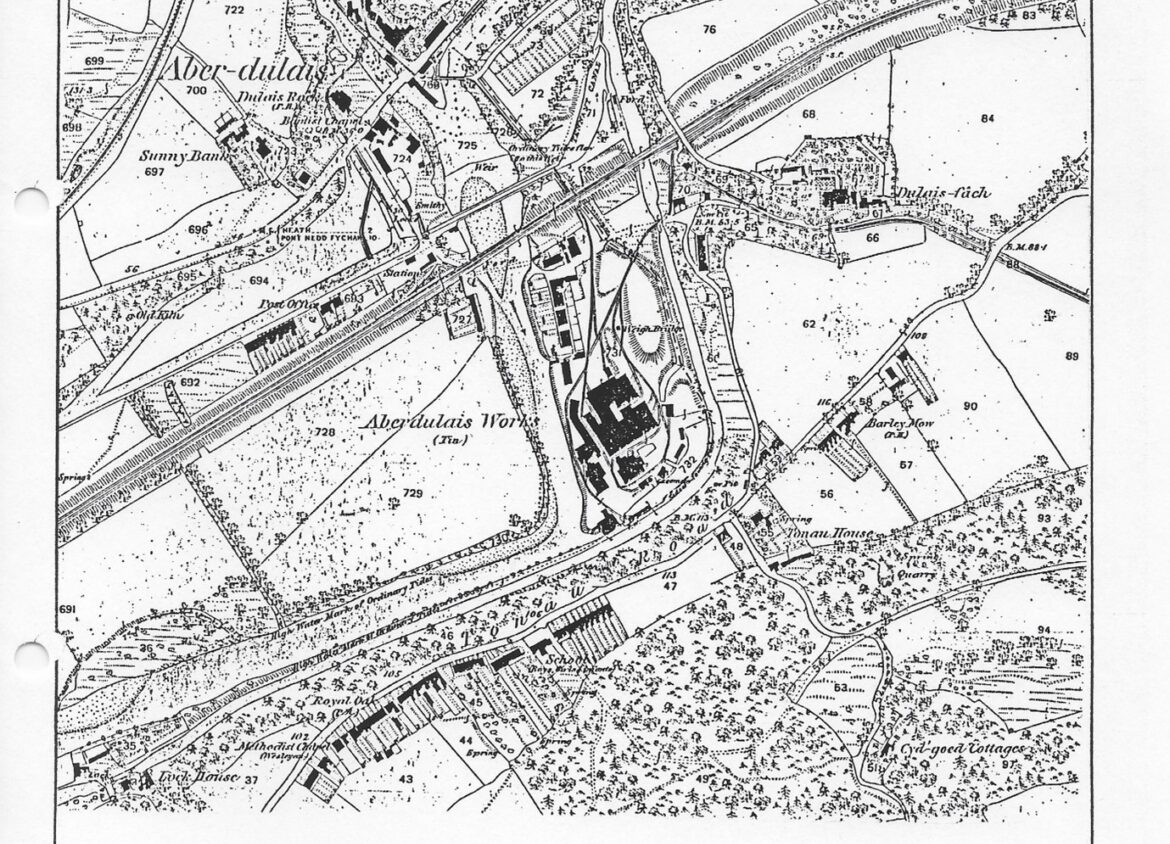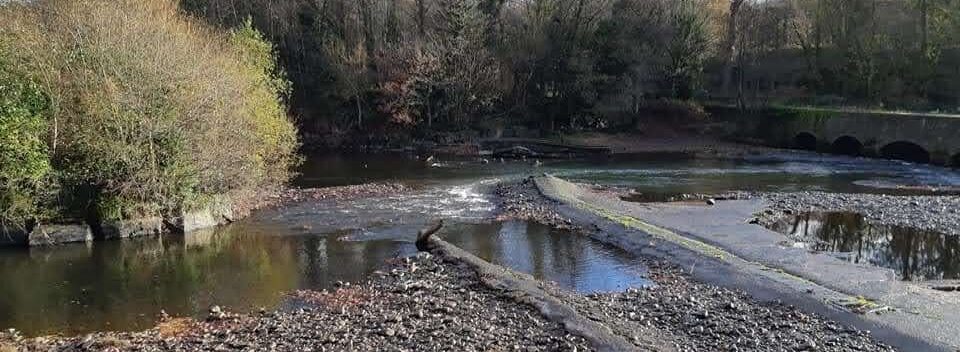
History of the Weir
One of the biggest problems facing anyone wishing to build a canal is the need to ensure an adequate supply of water. In 1822 George Tennant faced exactly this problem – he had a supply at the western end of the canal from the existing Glan-y-Wern canal, but there was no guarantee that this would be adequate to reach as far as Aberdulais. He was negotiating a junction with the Neath Canal at Aberdulais so that boat traffic could pass from the Neath Canal to reach ships further down the River Neath than at the Town Wharf (i.e. bigger ships). He had several discussions with local landowners regarding possible solutions which seem to have been fraught with many promises and later rebuffs. Following an agreement with the Dillwyn estate he drew up plans for the aqueduct and lock, with the agreement that the junction would cross the Neath no higher than the weir at Aberdulais. In 1824 the connection was completed and opened with much fanfare. The lock would bring water into the Tennant Canal with the passage of boats, but it was recognised that this would not necessarily be consistent with the amount needed for the Tennant so an additional source was required. ( Summarised from “A scratch in Glamorganshire” by Keith Tucker)
A feeder to the canal was constructed which made use of the increased head of water created by the weir referred to above to top up the level in the canal. There was also a “cut” which transported boats from Aberdulais Tinworks (now National Trust Site) fed from a weir on the Dulais which came down to the canal via locks. The brickworks at Cadoxton (roughly where Tom’s Nurseries is) also had a lock into the canal. These “cuts” were discontinued when the industries ceased work and have since been built over although a culvert opposite the old Wesley Chapel at Canalside still brings water down from the Dulais Rock when the Dulais level is high. The”cuts” can be seen in the area plan based on the 1877 OS Map.
In a report for the Port Tennant Canal Company dated 1919 held in the West Glamorgan Archives (ref D/D T 1269/1-3) details are recorded of how the sluices for the feeders needed to be cleaned (waders provided by the company!). It states that “There are 2 sluices to the Neath River Feeder which AT Williams deepened and extended to the Black Pool. It is vital to have this channel, which is bordered with wood, watched and frequently cleaned. One of our men does this at least once a week…… There are 2 sluices to this feeder on the Neath River at Aberdulais, the feeder being 8ft broad. Sometimes it is necessary to open both sluices, sometimes only one……..It is obvious that management of these sluices is very important to the canal”. The report also refers to the fact that the lock gate was badly damaged and there was some discussion regarding the necessity of replacing the gates due to the traffic from the Neath canal having ceased.
We believe that boat traffic on the Tennant ceased around the 1930s. This left the canal with no income but fortunately for the company this coincided with the establishment of the Anglo-Iranian (later National Oil Refinery then BP) oil refineries at Llandarcy and Baglan. The refineries required a constant supply of water for their processes. This proved to be a lifeline for the Canal Company and a pumping station was built near Jersey Marine which extracted water from the canal to supply both plants via pipelines (the one to Baglan passing under what is now Fabian Way and the River Neath). The Canal Company received an income from the sale of the water which enabled maintenance to continue. Following the closure of the BP plants the contract for the supply of water transferred to the Baglan Energy Plant.
The next significant development in respect of the weir was an application by the Environment Agency (Wales) for planning permission from NPT County Borough Council (ref P/2001/78) for the construction of a fish pass on the eastern side of the weir in 2001 under powers conferred under section 10 of the Freshwater Fisheries Act 1975. This was part of a publicly funded programme of work to extend the spawning range for migratory fish (e.g., salmonids). The permission was granted, and the work was carried out in 2002 by W S Atkins.
By February 2015 the weir had breached significantly to the extent that the fish pass was redundant. There followed lengthy discussions between the Canal Company and Natural Resources Wales (NRW, successors to Environment Agency Wales) regarding responsibility for the weir and who would finance the necessary repairs. This situation rumbled on until 2018 when a particularly dry period resulted in the water level in the canal being very low as no water was coming through the sluices. The resulting news items made the public aware of the problem. Tennant canal 'at risk' due to hot weather and water flow - BBC News. An agreement was reached between NRW and The Canal Company for pumps to be installed to abstract the water from the river.
In March 2021 Calon Energy (which had replaced Baglan Energy Plant) became bankrupt and, as there was no income for the Company, the pumps were removed. A further dry period in the summer resulted in a number of local residents becoming concerned about the future of the canal and forming a Facebook page called Save the Tennant Canal. This Association has now been formed by some members of that group to work with all relevant parties to ensure the continuance of the supply of water to the canal. Without water the canal will dry up, scrub will invade the bed and irreparable harm will be caused to our environment.
Save The Tennant Canal | Made for The Community*
*By local tech Steve Thomas who gave his time and skills for free to help save the canal.





